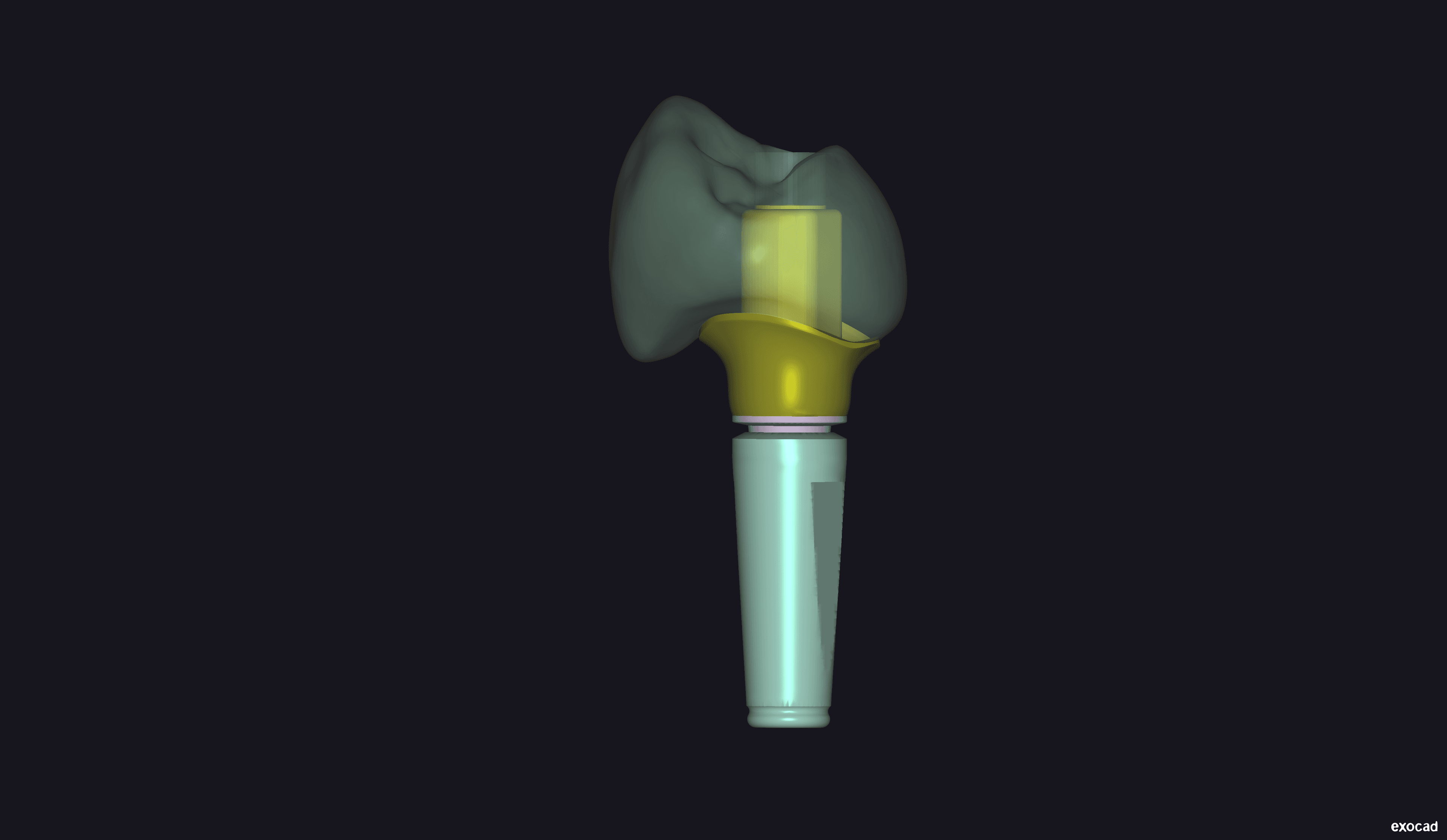Planning Multiple Unitary Crowns for Natural Teeth and Implants
Introduction
In this case, the planning of multiple unitary crowns for elements 14, 22, 24, and 36 was carried out. Crowns for 14 and 22 were planned for natural teeth, while crowns for 24 and 36 were planned over implants. For the crowns on implants, the prosthetic solution from SIN Implants was used, with intraoral scanning capturing the scanbody for the use of the TBase Epikut 0.5x6mm, ensuring the best prosthetic adaptation. The crown was cemented on the TBase, which was screwed onto the implant.

Materials and Methods
- Planned Elements: 14, 22, 24, and 36
- Crown Type:
- 14 and 22: Unitary crowns on natural teeth
- 24 and 36: Unitary crowns on implants
- Prosthetic Solution:
- Scanbody for capturing the correct implant position
- TBase Epikut 0.5x6mm (titanium base) for crown cementation onto the implant
- Planning Software: Exocad


Processes
-
Initial Planning:
The digital planning was carried out using Exocad for the unitary crowns of elements 14, 22, 24, and 36, considering the anatomy of the natural teeth and the need for a prosthetic solution for the implants. For teeth 14 and 22, crowns were planned on natural teeth. For teeth 24 and 36, crowns were planned on implants. -
Intraoral Scanning and Scanbody Capture:
For elements 24 and 36, intraoral scanning of the scanbody was carried out to ensure the exact implant position. The TBase Epikut 0.5x6mm was used to ensure the best crown adaptation. -
Crown Fabrication:
The crowns were digitally planned in Exocad to be manufactured in lithium disilicate material, ensuring good adhesion to both natural teeth and titanium bases.

- Evaluation and Final Adjustments:
After the crowns were fabricated, an evaluation was conducted to verify the correct adaptation of the crowns and the desired aesthetics. Final adjustments were made to ensure functionality and comfort for the patient.
